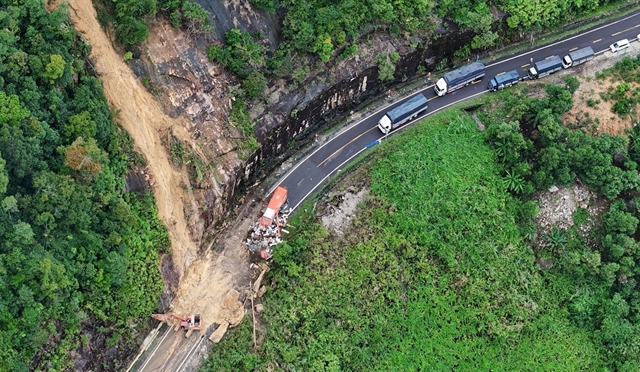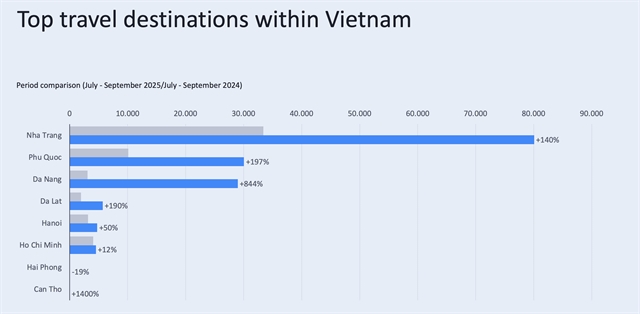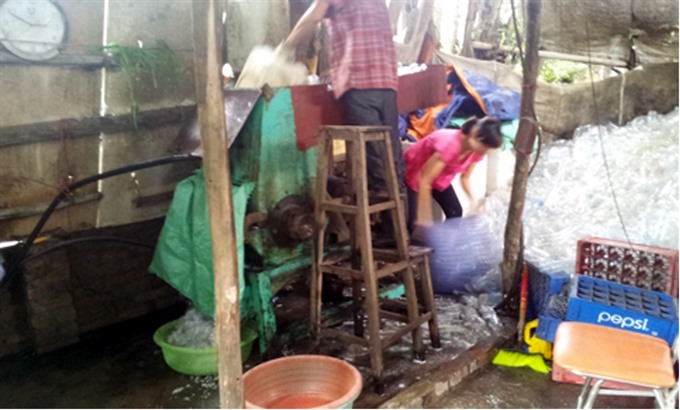 Environment
Environment

Hà Nội plans to move 117 polluting enterprises from the inner city by 2020, but the blueprint has met a number of obstacles.
 |
| Plastic waste is recycled in Triều Khúc village in Tân Triều Commune of Hà Nội’s Thanh Trì District. The waste water, noise and smell from the plastic recycling causes headaches and pollutes the environment. — VNA/VNS Photo Minh Nghĩa |
HÀ NỘI — Hà Nội plans to move 117 polluting enterprises from the inner city by 2020, but the blueprint has met a number of obstacles.
Angry residents
Residents living near the Đông Xuân Knitting Co in Vĩnh Tuy Ward of Hà Nội’s Hai Bà Trưng District are exposed to environmental pollution the company emits.
Nguyễn Thị Hằng, a resident, said smoke and dust released by the company every day affect air quality in the whole area. “The pollution level is lower than before because some parts of the company moved, but local residents are still unhappy with the dust and soot. On windy days, bad smell spreads,” she said.
Many people, especially the elderly and children, suffer respiratory diseases, said Hằng.
Many other enterprises in the capital also cause pollution.
At a recent meeting of the Hà Nội People’s Council, voters from Thanh Trì District proposed that authorities move polluting enterprises, including the Văn Điển Battery Joint-stock Company and the Văn Điển Fused Magnesium Phosphate Fertiliser Joint-stock Company.
The Hai Bà Trưng District People’s Committee has already drawn up a list of enterprises that need to be moved.
Nguyễn Nguyên Quân, head of the Urban Division under the Hà Nội People’s Council, said the capital has scheduled to move 117 industrial plants that are not suitable to the city’s infrastructure and technology. The plan is divided into four phases. The first will target polluting enterprises in the Hoàn Kiếm, Ba Đình, Đống Đa and Hai Bà Trưng districts.
In the subsequent phases, all polluting and unsuitable enterprises will be removed from all 12 inner city districts.
Urban Division data show that 32 industrial plants have submitted plans to change their land use. However, implementation is slow due to contradictory policies on local and central levels, and because the relevant agencies are not cooperating to carry out the work effectively, he said.
Land use
Nguyễn Hồng Quân, head of the Thanh Xuân District Natural Resources and Environment Division, said about 20 polluting enterprises in the district need to be moved and work is going according to schedule. The remaining problem relates to land use, he said.
Three polluting enterprises in Thượng Đình Ward - the Thăng Long Cigarette Plant, the Hà Nội Soap Joint-stock Company and the Sao Vàng Rubber Company - have stopped operations, he said. “The plants joined hands with investors to build residential quarters and plazas. But we did not know they were doing that,” he said.
Tạ Thu Giang, a resident of Thượng Đình Ward, said she was happy that the companies had stopped polluting the area after suffering for years from their noise, smoke and bad smells.
Architect Phạm Thanh Tùng, office manager of the Việt Nam Architecture Association, said most enterprises did not hand over their land to authorities after they moved. Instead, they make deals with investors to build residential quarters or supermarkets, citing the need to supply housing for their workers.
No enterprise wants to build car parks or parks, which the city needs, said Tùng.
Tùng said all the polluting enterprises were in good locations so when the land use purposes is changed, the land fetches high prices. Tùng proposed withdrawing land rights from the owners after their enterprises move, and using the land to build public facilities that serve local residents.
“If the land is used to build residential quarters, the city must calculate pressure related to population, infrastructure and traffic, and the investors must share the pressure with the city authorities,” he said.
It would not be fair if the investors were to enjoy profits from residential quarters whereas the State and city authorities would have to bear costs of infrastructure construction.
On the other hand, traffic jams and waste also cause pollution, not only smoke and dust from enterprises, he said. — VNS